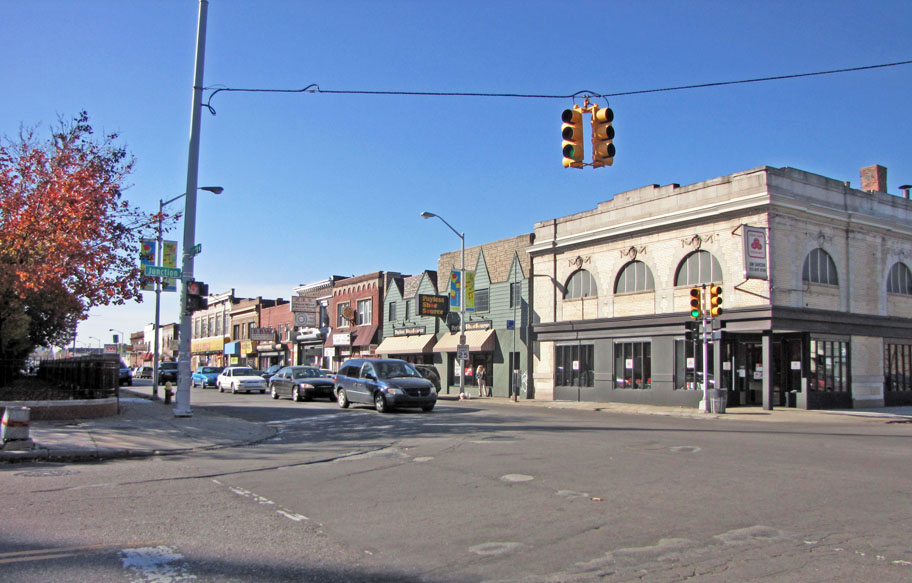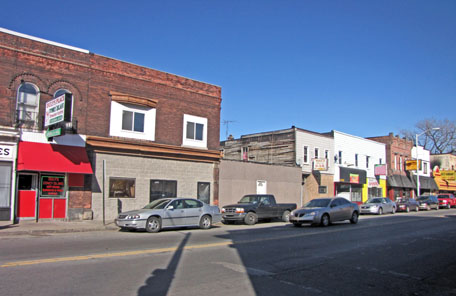

This historic district includes 44 buildings that line West Vernor Highway near Clark Park. Perhaps, the most significant structures are those on the campus of Most Holy Redeemer Church located at the intersection of West Vernor and Junction. The huge and very attractive church was designed by Donaldson and Meier and built in 1880. Associated with it, there is a large rectory, a convent, an elementary school, a high school and a large gymnasium. At one point after World War II, this parish claimed to have a larger number of congregants than any other Roman Catholic parish in the nation.

Another significant building is the former Stratford Theater at 4751 West Vernor Highway. This structure was designed by Joseph Jogerst and opened in 1916. This is another one of the many large theaters in Detroit that date from the pre-movie era. It originally had seats for 1,137 patrons.
Many of the 44 buildings in this historic district are several stories in height and face West Vernor. The ground floor is devoted to a small retail business. One or two higher floors provide residential space. Most were built between the later decades of the Nineteenth Century and the First World War. They illustrate the type of commercial-residential buildings that were commonly constructed in American cities at that time when residents walked short distances from their homes to do their shopping.
Unlike some former shopping areas in Detroit and the suburbs, most of the stores in the West Vernor-Junction district are open for business every day. And, unlike many Catholic and Episcopalian churches in Detroit, Holy Redeemer is a vibrant parish. This is explained by the Mexican and Central American population who live in this area. Some Mexicans came to Detroit to work in the munitions plants during World War I, but many of them were sent back after the end of that conflict. During World War II, Mexicans once again migrated to Detroit for defense industry jobs. Some remained in Detroit after that war but many left for other locations. Since about 1970, there has been a substantial migration of Mexicans and Central Americans to many areas of the United States. Detroit’s Mexican born population increased from_______ in 1970 to _______ in 2000 and then grew slowly to ______ in 2008.
Many of them live in this area, helping to account for the prosperity of the local shops in this historic district and the activities at Holy Redeemer.
City of Detroit Designated Historic District: Not listed
State of Michigan Registry of Historic Sites: Not listed
National Register of Historic Places: Listed 2002
Use in 2009: Commercial and residential area serving a largely Hispanic population
Photographs: Ren Farley; November 12, 2009
Description prepared: December, 2009
Return to Michigan Registered Historic Districts
Return to National Register of Historic Places